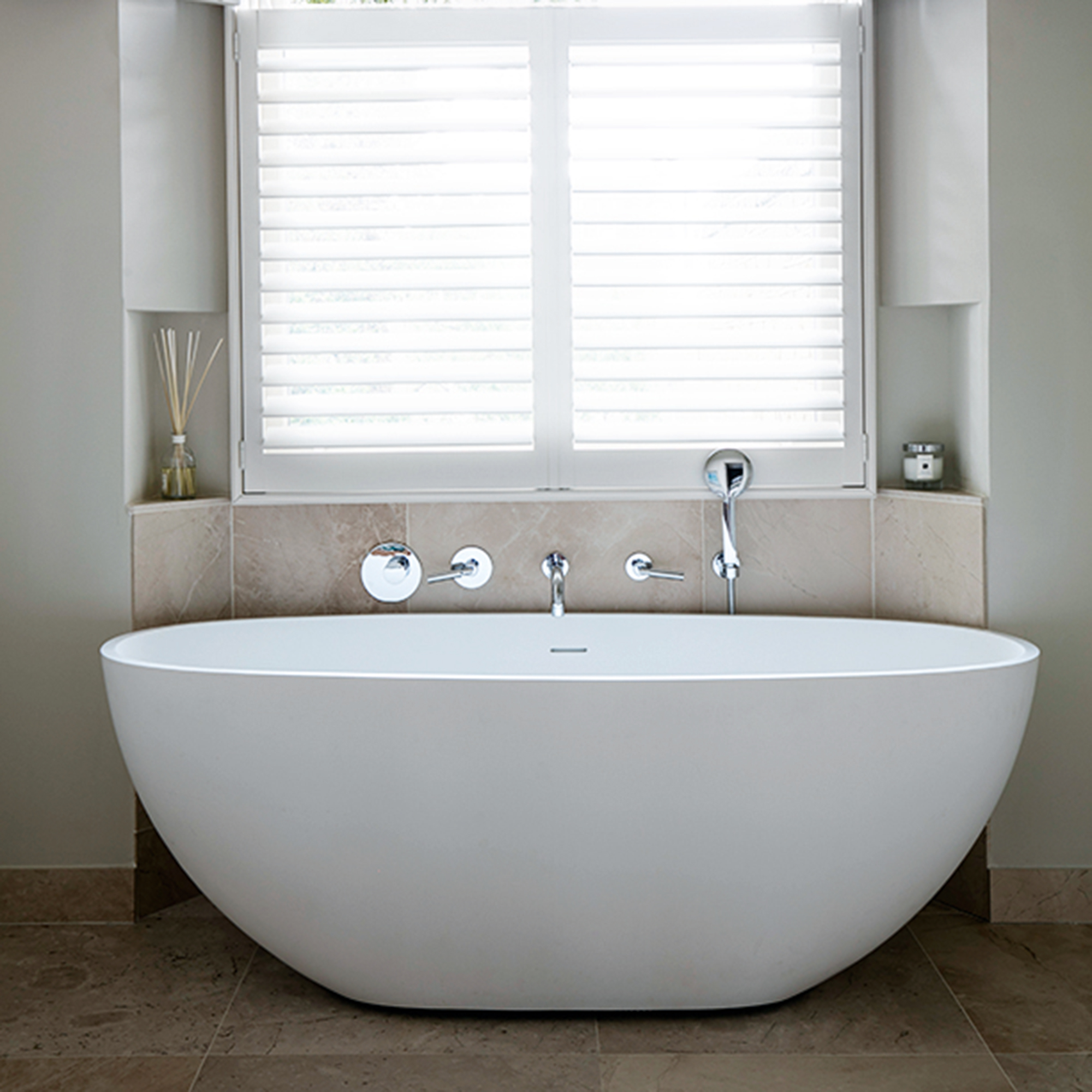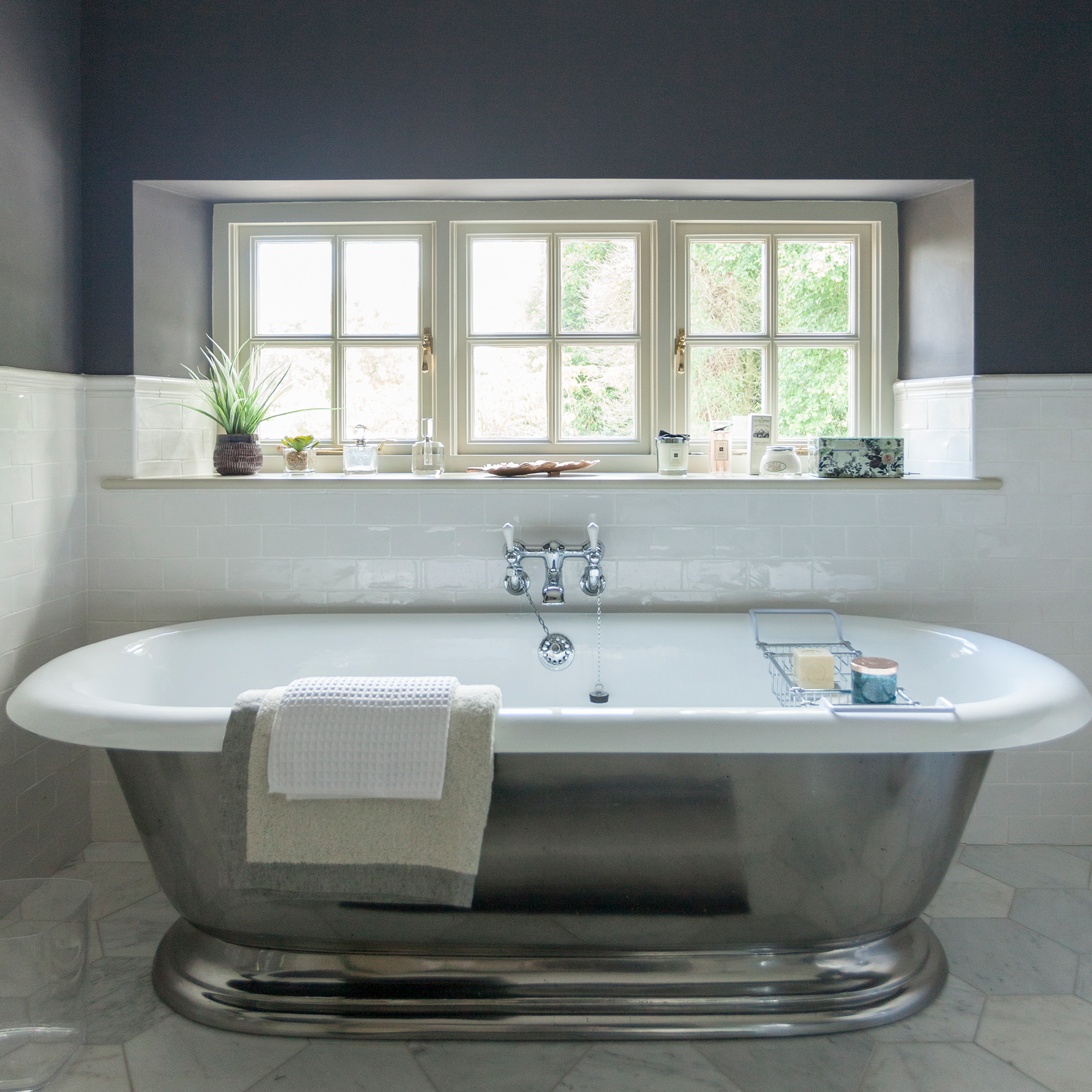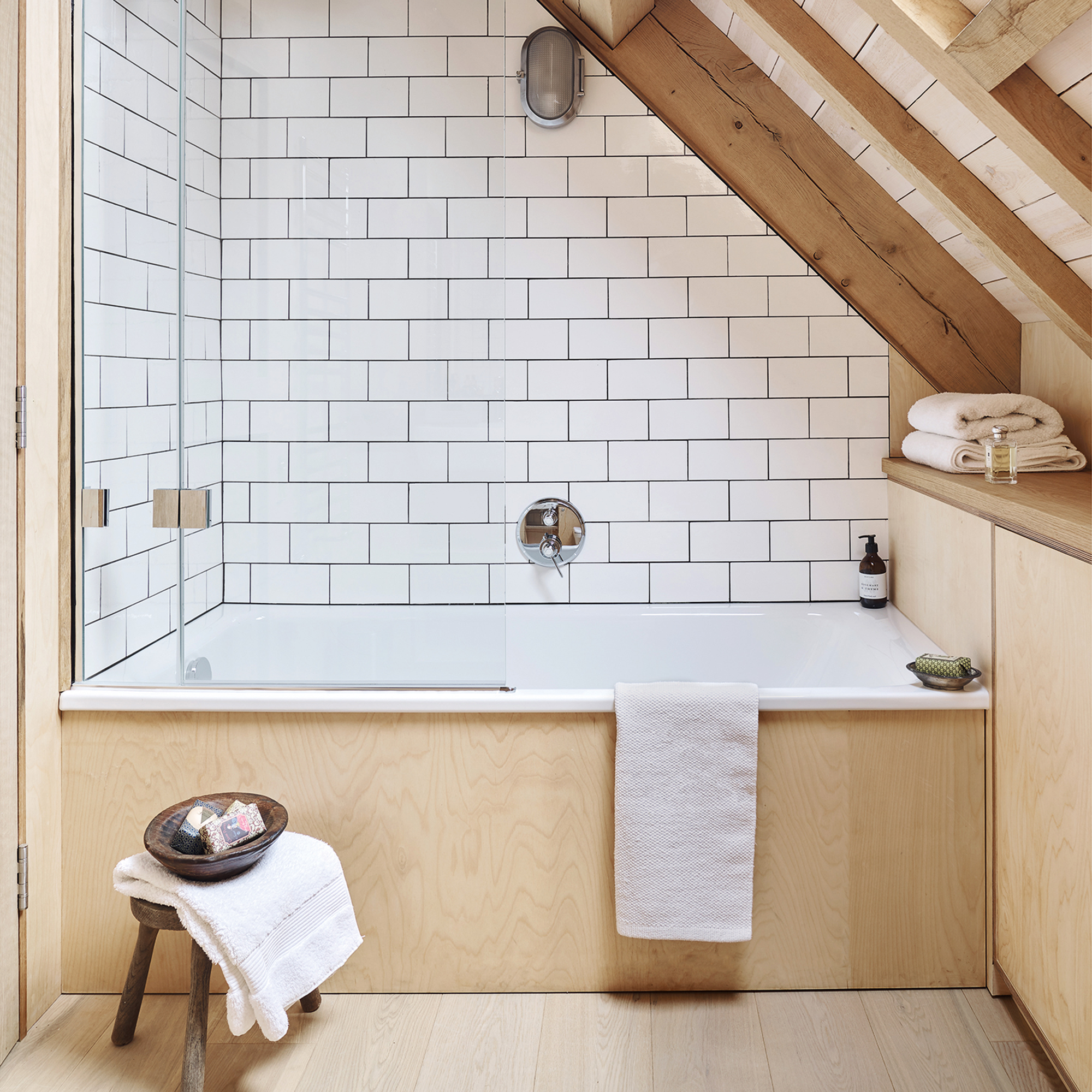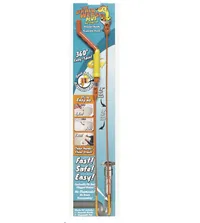How to fix a slow-draining bathtub – for stress-free soaks
A step by step guide to smoothly draining tubs


Knowing how to solve household problems yourself always a plus, and for something like how to fix a slow-draining bathtub, it's best to be able to have a go yourself rather than running straight to the pros.
When your bathwater takes hours to go down the plughole and leaves soap scum lining the bath, all the stress and tension that you’ve just soaked away comes back with a vengeance. Given how much hair and soap makes its way down the drain, it’s a really common problem and, like other bathroom situations such as how to unclog a toilet, easily solved. However, it’s worth doing a bit of investigation first.
How to fix a slow-draining bathtub

If other drains – the shower and basin – are also draining slowly, then the problem is a long way down the pipe rather than local to the bath only. When that’s the case, you’re better off calling in the pros to give your pipework a proper blast through with a water jet or plumber’s snake.
However, if it’s just the bath that’s misbehaving, this then it's time to figure out how to fix a slow-draining bathtub. Got sink issues, too? We can help you to unblock your sink.
1. Protect yourself
First thing with how to fix a slow-draining bathtub is to remember that you’re going to be touching all kinds of yuck, so put on a pair of rubber gloves. You might also appreciate knee pads or something soft under your knees to protect them from the hard bathroom floor while you work.
2. Remove the plug
This is easy if you have a traditional plug on a chain, but if you have a pop-up design operated with the twist of a button on the side of the bath, or a push-to-pop-up plug, you’ll have to unscrew or prise off the cap to leave the plughole exposed. Drop it into a bowl of limescale remover so it cleans up while you crack on.

3. Pull out the clog
You’ll need a tool for this step in how to fix a slow-draining bathtub. We love a drain weasel - a tightly coiled wire spring with hooks at the end that you can open by pushing the plunger at the top.
Sign up to our newsletter for style inspiration, real homes, project and garden advice and shopping know-how
Insert it into the plughole until it meets resistance, open the hooks, push it in a bit further until it’s grabbing the blockage, and slowly pull it back out with the hank of soapy hair attached. You’ll probably need several goes to pull it all clear.
In a pinch, try using a flattened coat hanger (the hook part will snag the clog) or a piece of strong wire bent into a hook shape.
The Drain Weasel 2 Disposable Plughole Cleaning Brushes, £11.99, Lakeland
This option has a reusable handle, so you only need to replace the brushes as and when needed.
4. Follow with a bicarb-and-vinegar flush
‘This is a simple and effective drain cleaner that can be made using things you already have and won’t damage the pipes in the process,' advises Laura Rudd, a plumbing and drainage expert at Homeserve.
Take 15 tablespoons of bicarbonate of soda and put it into the pipe, then pour 100ml of white vinegar shortly after. Once the fizzing has stopped, flush out the pipe with boiling water.

5. Partially fill the bath to test drainage
Then pull the plug out to check that the water is draining quickly and freely. If not, it’s time to step up your game…
6. Try a chemical cleaner… or call in a pro
‘We see chemical unblockers as a last resort for how to fix a slow-draining bathtub as they are poisonous, can burn the skin and potentially damage pipes,' says Laura from Homeserve.
‘If you have tried the above methods to clear your drain but have been unsuccessful, it is likely that the blockage is further down the drain and will require a professional with the right tools to find the blockage and remove it,' says Rob Bennett, Technical Service Manager at Pimlico Group.
Laura adds that it’s unwise to have a go at a blocked bath with a plunger, the way you might with a sink. ‘Care needs to be taken when attempting to plunge a bath as most have combined overflows which are often concealed under the bath. These can sometimes pop off, potentially flooding the bathroom.’

7. Prevent future blockages
‘Use a drop-in hair trap which sits over the plughole to collect hair and other debris,' advises Laura from Homeserve. These budget friendly hair traps are available at Amazon. You simply need to clean them out and dispose of the gunk in the bin.
‘If the water in your bath isn’t draining properly, or at all, chances are there’s a blockage,' adds Laura. 'It could be a build-up of scum and/or hair in the drains.’
‘Using a combination of bicarb and vinegar will help with how to fix a slow-draining bathtub by breaking down certain debris that can build up in your drain but whether it will completely clear a blockage will depend on what is causing blockage and where the blockage is located,’ says Rob from The Pimlico Group.
‘The safest thing to use would be ecofriendly commercial decloggers. These are enzyme based and won’t damage your pipes.’

Vanessa Richmond has been a freelance writer, editor and editorial consultant since 2021. Her career in magazines began in 1998 and, apart from a four-year stint at women’s lifestyle magazine Red, it has been spent working on interiors titles including House Beautiful, Country Homes & Interiors and Style at Home. She is a former editor of Ideal Home, Country Homes & Interiors and Style at Home magazines. She has also worked for House Beautiful and Red. During her 25 years as a journalist, she has been a sub-editor, columnist, deputy editor and editor. Now she combines freelance writing with being a secondary-school English teacher.
